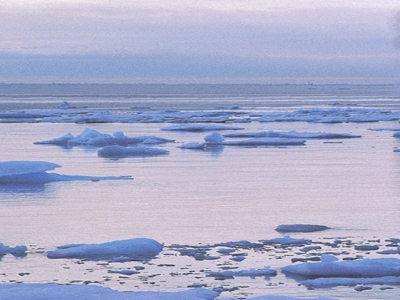The study looks at four types of oil spills under different conditions -22 different scenarios
As the Arctic warms and sea ice retreats, oil and gas exploration is underway in Canada’s Beaufort Sea, with all the benefits and risks this development entails. To better understand these risks, particularly those of proposed shipping and exploration, WWF has taken a milestone step in answering these big questions by leading groundbreaking research to map possible oil spills in the Beaufort Sea. This study looks at four types of oil spills under different conditions, resulting in 22 different scenarios.
Explore some of the key findings by clicking at the WWF’s interactive map below , which WWF is making available to help advance discussions about balancing conservation and development in the Canadian Arctic. The results from the study give northern residents and decision-makers scientific evidence they need to make choices about the risks they face.
The project involved the analysis of multiple types of oil spill scenarios that could occur in the BeaufortSea. The goal was to assess the transport, fates, and effects of oil on nearby surface water andshorelines from potential crude, heavy fuel, and light fuel oil spills. Modelling investigated both surfaceand subsea releases.
Four different generalized “spill analyses” were evaluated for this study:
- a shippingspill analysis in the eastern region of the Beaufort Sea in the Amundsen Gulf;
- a trans-boundary analysisof various spill types (shipping and pipeline leaks) on the coastal Beaufort Shelf near the U.S./Canadianborder;
- a shallow blowout analysis close to shore on the Beaufort shelf in an area potentially subject toexploratory drilling; and
- a deep blowout analysis on the Beaufort shelf break in an area potentiallysubject to exploratory drilling.
Each spill analysis consisted of multiple varied scenarios. For the blowoutanalyses, both worst case discharge (WCD) and maximum most probable discharge (MMPD) volumeswere evaluated. For the other analyses, mostly the MMPD was considered.
Spills were simulated duringboth the ice free season (July to October) and throughout the ice season (November to June). Responsemeasures were considered for various events (subsea and surface dispersant application, and in situburning).
Further analysis may be found by reading the Draft Report ” SIMAP Modelling of Hypothetical Oil Spills in the Beaufort Sea for WWF”
Visit WWF’s official webiste at www.worldwildlife.org
Read relevant articles below
Reuters – Arctic oil well blowout could spread more than 1,000km: WWF study
Huffington Post – Arctic oil spills in Canada likely to spread across borders: study
Alaska Dispatch News – Study envisions possible fallout from a Canadian Beaufort oil spill
































































